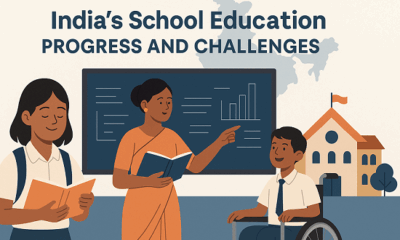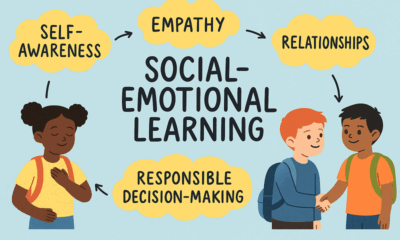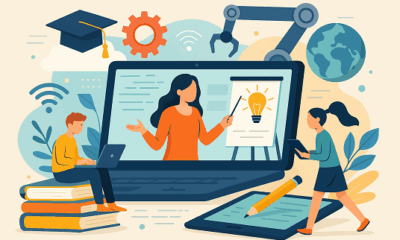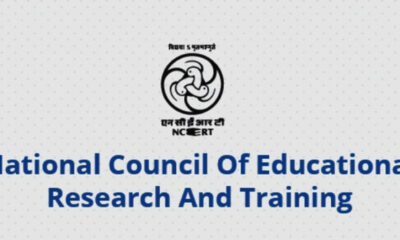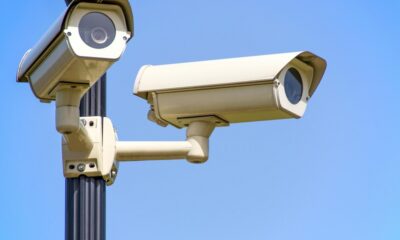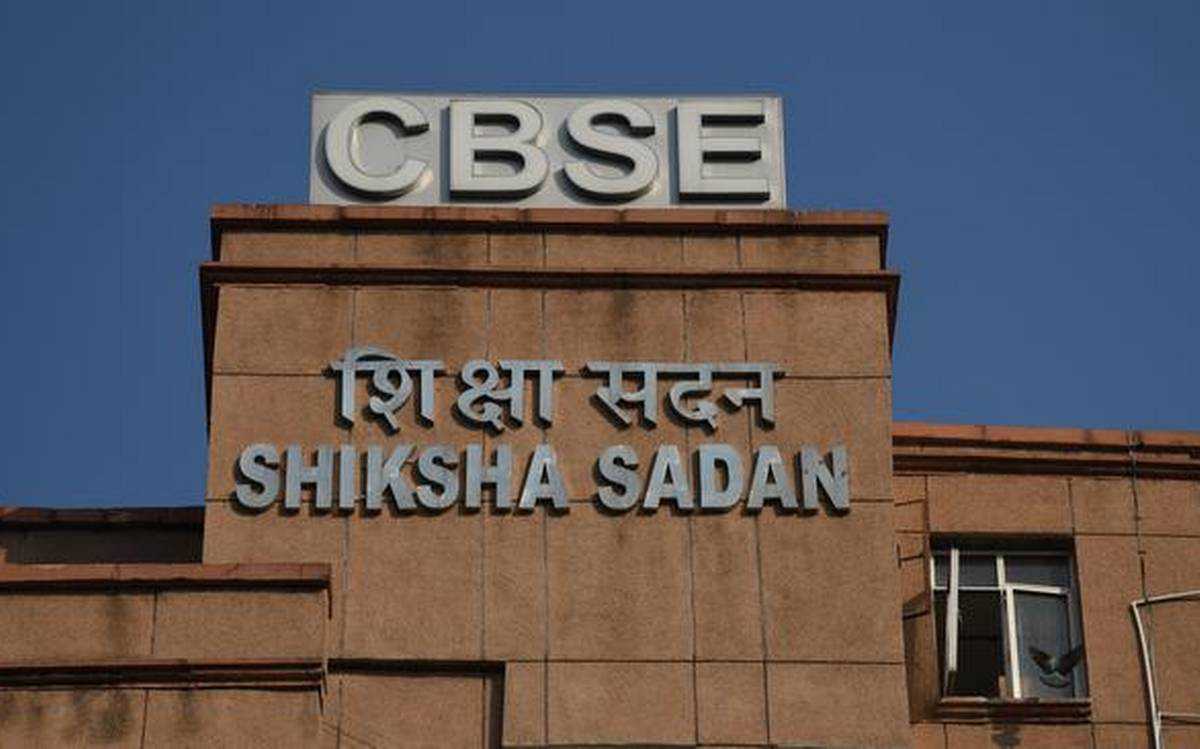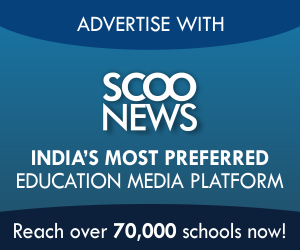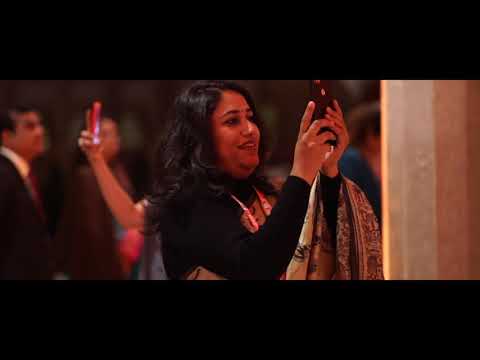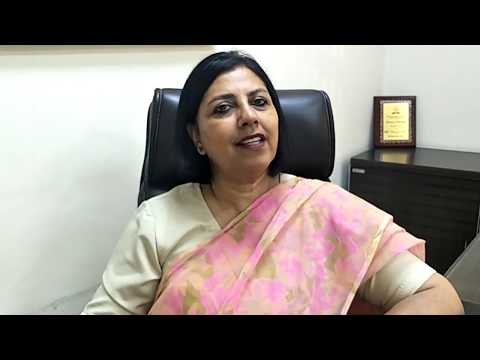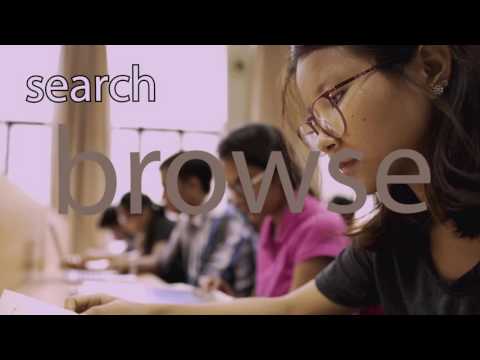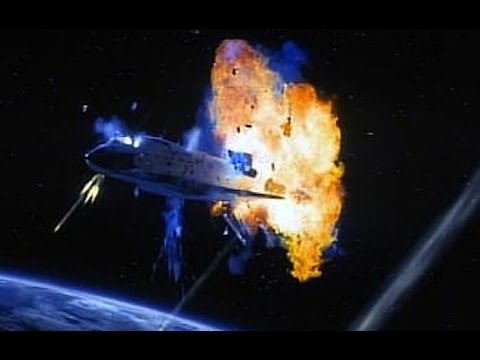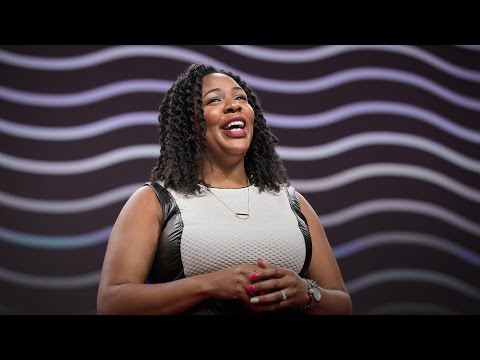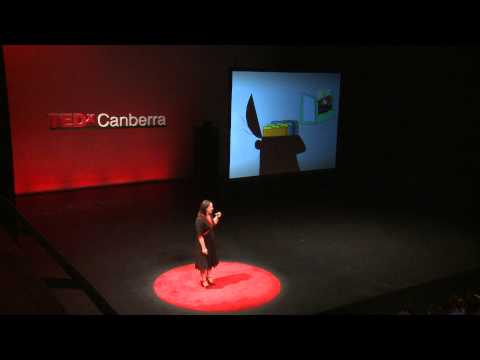Education
Classrooms: How should they change with the times?
PARVATHY JAYAKRISHNAN invited students to share how they envisioned their classroom and ideal teaching methods

Technology is everywhere. What it truly implies is that knowledge is there right at your fingertips. Paper maps have been replaced by Google maps, if you want grocery, you order online, to get the latest news, you subscribe to it on your smartphone. With digitisation replacing manual work in most areas of use, it is inevitable that the role of a teacher using traditional methods of teaching will soon become redundant. With most teachers themselves having learnt in the blackboard-bench set-up, it is a change that they have to adapt to and embrace to make classroom learning more effective.
With ‘flipped classrooms’ taking over traditional ones, teachers are slowly making progress in modifying their teaching methods.
A flipped classroom is an instructional strategy and a type of blended learning that reverses the traditional learning environment by delivering instructional content, often online, outside of the classroom. It moves activities, including those that may have traditionally been considered homework, into the classroom. In a flipped classroom, students watch online lectures, collaborate in online discussions, or carry out research at home while engaging in concepts in the classroom with the guidance of a mentor.
Excited about sharing their views, students from schools across India spoke up about how they want their classrooms to be and what are the changes in the method of teaching that can be adopted to include technology…
Interactive discussions, fewer tests
“No longer are classrooms restricted to teachers and books, as technology has changed the face of classrooms. With everything in the syllabus easily available online, students no longer need to carry books, thus reducing their load to school. Instead, they can just carry a laptop or a tab. Teachers can use projectors to highlight contents and use television to show informative documentaries. They can also use computers to prepare charts and graphs to disseminate information in a nutshell. Visual information in the form of charts and videos help students to understand concepts better. Smart boards are also widely used in schools nowadays, which reduce time wasted in teachers writing information on the board. The use of technology makes the classroom more interactive and colourful, thus making it easy to learn and more interesting to the students. And since this generation was brought up with technology all around them, using it in education will make them feel at ease. As the syllabus content is all online, students need not buy or print it again, as they can just see it on their tabs, or on the smart board.
Although, I wouldn’t be telling the truth if I said that the blackboard-benches format is not completely relevant today. I mean, it has been used for so many years, so many generations, and has helped students learn. But as the years go on by, everything is changing, and so should the method of teaching. So the switch-over to electronic media is the right thing to do. The blackboard-benches format gives a primitive feel to the class and the children feel lackluster. In this format, the teachers have to put extra energy and creativity to capture the interest of the pupil. It is also time consuming as the teacher has to spend time writing everything on the board. But one thing that this format does is the bonding between the teacher and the pupil. Technology cannot have such a great impact on a students’ life as a teacher does.
If classrooms are to be made interactive, students should be given activities related to the topic taught so that they understand the concept better. Emphasis should be laid more on teaching subjects and coordinating it with everyday activities, so the student can implement it on a daily basis or at least when required. Just learning theoretically is no longer relevant in today's world. Technology is fast changing, so quick thinking and implementing is essential to survive in this competitive world. Students should be encouraged to think differently and discuss their ideas with each other to lay the foundation for team work.
I’m glad that many teachers today encourage students to refer to and study content online. They too are updating their topics with recent developments in technology. Surely integrating these external learning systems with the school system will help students learn better. Just the idea of being tech-savvy makes the student thrilled. YouTube channels often offer unique and easy to understand techniques for students to apply in their exams. They provide an alternate way of teaching from the way it is usually taught in class, if students don’t exactly grasp the main concept. Online teaching usually explains concepts based on problems encountered in daily life, so the concept is better understood with its relevance.
In my dream class, there wouldn’t be any tests, or at least not as often. I would rather have interactive discussions with my co-students in which the entire class participates and everybody gets to air their opinion. Teachers should explain concepts with live demos or 3 dimensional models to have a better impact. Instead of writing, they should present the matter in powerpoint presentations thus reducing time delay. After explanation, they can show us some documentaries which will inform us how advanced the concept has grown today. I would also like spacious rooms with comfortable seating and colourful walls, with no restrictions on movements because if I am not comfortable, I wouldn’t be able to concentrate on the class.”
Adnan Ashriya
Class XI
Alpha Cambridge International School,Trichy
Making the classroom inclusive
“This is the 21st century and the nation is blooming with new technologies. Turn any side and you can find at least one thing which is automatic or it works on AI (Artificial Intelligence). While we have embraced it in multiple applications, why can’t we use it for our education? Education and Artificial Intelligence are two tracks which we can combine to make our learning better. Why should we carry heavy books and notes to school when we can have our content in our portable electronic gadgets at one swipe? Tests and homework can be done online and the students can have their own login ID and password to make it secure enough.
The classroom can be made inclusive by creating an academic support, a change in our curriculum, adjusting ranking calculations, creating a respectful school community and create a space for discussion.
In my dream classroom, blackboards would be replaced by smart TVs, our books and notes will be replaced by our own laptops, students will have their own pods and working spaces, they will have their own personal and customised lockers. They will have access to their phones only when allowed and they are free to access the range of e-books in the school’s website.”
Aparna
Class XI
Alpha Cambridge International School,Trichy
Tech should not replace teachers
“With the syllabus content easily available online, we can make the best use of improved technology in our classrooms. Technology should not replace teachers. Its main use is to enable students learn better and stimulate individual learning. This can be done by introducing tab-oriented learning in classrooms.
A classroom must have a black board in which concepts can be explained well to the students. In a classroom which is very advanced, blackboards can be replaced with smart boards in which teachers explain the concepts in the form of modules.
An inclusive classroom is a general education classroom where children with different abilities, capabilities and disabilities learn together. The class can be made by providing assistance to individual students. Another key aspect of an inclusive classroom is accessibility. Group learning can also be encouraged to make sure that every student of the class cooperates with one another.
Today, teachers are open to students learning from and discovering new YouTube tutorials or education apps. Integrating an external learning system provides better understanding of the concepts. But this alone is not going to help out, teachers have to take the children to the labs and show live experiments. But of course education apps provide students extra notes to learn and they are able to score good grades in examinations with the help of these apps and tutorials.
My dream classroom should be like heaven on earth which will contain a comfortable cushion chair with a table and every student needs to have a separate locker in which their things can be kept safe. The classroom should allow students to have their own laptops. The teacher should be so friendly with the students and they should give a few chances for them to make mistakes. There has to be a relaxation time of 10 minutes after every period. Books should not be carried; everything should be taught online and assignments also should be done online.”
Evangeline Esther J
Class IX
Alpha Cambridge International School,Trichy.
Switch to e-books
“Majority of Indian schools do not make use of all of the modern technology available via laptops and tablets. We carry cartloads of books and notebooks to and from school. If you lose a textbook or notebook, you may have a hard time learning in school and studying for exams. But, all of these textbooks are available online, so all you need is a tablet or a computer, and you can have access to those textbooks anywhere and at any time. You don’t have to worry about losing your textbooks. E-books are much cheaper too plus you are helping the environment by not using paper. So, from some of my personal experiences in the USA, I feel classrooms should provide students with tablets/laptops, and allow them to access textbooks using the device. Notebooks can also be replaced with tablets/laptops because there are free programs available like Google Docs (which I am using now), which allow you to type notes and access them from any device with the same Google Account and an internet connection, you can also save some documents to your computer in offline mode.
Blackboards and benches are not only boring but also unhelpful, they only allow you to write on them and they don’t allow for any interaction. Smart boards, on the other hand, are much more relevant today, a smart-board is basically a large TV, the size of a blackboard, which acts like a tablet, you can use it to play games, write things (using a program, smart-board markers and dusters), you can play videos on it, and write on the video/PPT, and do everything you could possibly do with a tablet, you just need a computer and cable. These smart-boards are very intuitive and attractive; they can keep students actively participating in the class and supplement learning. It may be a bit expensive but the advantages outweigh the cost. Benches should be replaced with individual tables and chairs arranged in groups for easier discussions.
The use of technology, in the right way, can even make the most boring lesson intuitive; there should be a balance between fun technology and learning. For example, if you are sitting in a biology class with a blackboard, you may be bored. But think about this, what if you had a tablet, which showed what the organ looked like and how it worked, while your teacher was showing a video on a smartboard, you and your friends were having an engaging discussion about this organ, and your tablet is taking notes based on what the teacher was saying based on speech recognition. That sounds much more fun and intuitive right? If every classroom was like this, everyone could do well in school, through a balance between fun and learning.
I feel, personally, that in my school, that teachers are not very open to students learning from YouTube videos on their own. The teachers do show us videos, but are not very encouraging towards us learning from YouTube videos that we choose. At my school, we do not use educational apps very much. But when I was in the USA, in my school, we were provided with MacBook Airs by the school, we did not have much-written homework at all! We were asked to watch YouTube videos and write about them, do lessons on apps like Khan Academy, and more than all of that, our teachers encouraged us a lot to go out and learn things ourselves on educational apps and share useful YouTube videos that we found with the whole class, this made learning much easier, more fun, and much more intuitive. I was able to learn things easily with the help of these apps, programs, and websites. By using computers more, I also learned how to type quickly and how to search the web effectively.
My dream classroom is not really a classroom; it is more of a system, which is followed by Middle Schools in some western countries. It is a system where the students go to different classrooms and attend class, they are provided with lockers to store their books and personal items. What I would like the individual classrooms to have is a SMART Board 7275 Pro, I would like for the students to be provided with Macs, the students should be seated in groups with individual desks and chairs, and the room should have some board games and cards if we finish early.”
Ishaan Masilamony
Class VII
Alpha Cambridge International School,Trichy
Reduction in technology
“We embrace the benefits of living in a high tech world—with high tech classrooms already, in my opinion. It’s high time we reduce the use of technology during sessions with teachers which includes a non-virtual conversation with a complete understanding of each other. I definitely prefer the ancient way of teaching that had more practicality and more physical manoeuvre than the use of smart Televisions and iPads. I feel that these gadgets are driving children to addiction and isolation, with most of them living in a hypothetical world.
Use of technology in education has come a long way since the earliest times of human civilization. While embarking on aids with advanced technology, we need to take full cognizance of the lessons from the past, striking a balance between embracing new methods of teaching and learning while holding on to the timeless principles of education.
Lessons can be enhanced with the right video. Something visual and entertaining that speaks to the subject the teachers teach breaks up the monotony of a lecture, brings some fun into the lesson, and keeps us more engaged and interested in the subject.”
Jyotsna
Class IX
Alpha Cambridge International School,Trichy
Getting interactive with technology
“Teachers have to rethink their teaching methods, as this is a flipped classroom we are talking about. Students' expertise in online communication can play a major role here. Letting the students create, collaborate and get interactive with technology can make their learning a whole lot fun. Adding a few simulators in higher grades would be good too.
Living in the 21st century, blackboards aren't exactly the first thing that comes to everyone's minds when given a choice between black and white boards. When someone prefers an older technology to a newer one, there's usually both a utilitarian reason and an aesthetic or nostalgic reason. Blackboards are better tools than whiteboards especially at showing processes, as they force teachers to work more slowly and deliberately and think, whether they are going through a complicated problem, or just simply noting down thoughts and ideas.
Making classrooms inclusive can be a piece of cake if thought thoroughly, by taking each of the classroom activities in mind. Electronic books, speech software etc. can be brought in for "reading", whereas grammar or spelling checkers, word processors etc. can be a part of "writing". There can also be eye glasses and eye magnifiers for "vision" too.
Honestly, not all teachers encourage technology to interfere in education but there are an equal amount of teachers who do embolden smart learning which makes their lectures immensely exciting. Adding a few of these "high tech" procedures, will not only help other students in their learning, but also make schooling fascinating.
First thing, my dream classroom won't have any of the hard table and chairs we sit on, instead it would have plush and comfy chairs with every student having their own study space which they go to after every lesson for a 10 minute break to revise everything they learnt in the past hour. My classroom will be 10 times the size of a normal classroom inclusive of a small "your zone" where a person can go relax and come back during intervals. Smart tables in the main space for learning and will be placed where interaction between the students and teachers can be facilitated, not forgetting the podium upfront for class seminars and activities.”
Shridhi Singhvi
Class IX
Alpha Cambridge International School,Trichy
Real-world problems in the classroom
“An important use of technology is its capacity to create new opportunities for curriculum and instruction by bringing real-world problems into the classroom for students to explore and solve. Technology can help to create an active environment in which students not only solve problems, but also find their own problems. This approach to learning is very different from the typical school classrooms, in which students spend most of their time learning facts from a lecture or text and doing the problems at the end of the chapter. Learning through real-world contexts is not a new idea. For a long time, schools have made sporadic efforts to give students concrete experiences through field trips, laboratories, and work-study programmes. But these activities have seldom been at the heart of academic instruction, and they have not been easily incorporated into schools because of logistical constraints and the amount of subject material to be covered.
Traditional blackboards can be used for geometry, botany subjects where the lecturer has to explain with a drawing. But I feel newer methods of teaching are good for the students to understand subjects better.
In my dream classroom, I will ensure that work flows throughout the classroom. I will create a place where students can meet and feel secure – students learn from each other, they need a consistent environment where they can have face-to-face interactions. I would place the teacher's desk at the back of the room rather than the front- this lends the classroom to maximizing student learning through communication, reflection and reinforcement rather than the traditional "chalk and talk" setup
Of course yes, I would surely exclude the system of memorizing and vomiting and I would completely encourage the use of technology as much as possible, not only for easy access but also for interaction between students.”
V Deepika
Class IX
Alpha Cambridge International School, Trichy
Knowledge over marks
“Our classrooms can be made progressive by integrating technology into our teaching in order to make it as easy as possible for the children to learn and in order to
give the students another perspective of a topic being taught. We can also use web services such as Google Classroom and Microsoft Teams to remind students of
homeworks and assignments by posting them online, rather than the old school diaries.
The blackboard-benches format is irrelevant in today’s culture and in fact, the old school system hinders students from learning the subject matter in an effective way. Using blackboards for subjects such as Physics, Geography, Chemistry, and many more does not paint a wholesome picture and sometimes even leaves the students confused since they can not completely understand the concept. By saying so, I’m not stating that black boards should be completely eradicated, instead, blackboards should be used as a supplement to a more digital classroom.
The best way to make the classrooms more inclusive is to govern the school pupil using love and friendliness instead of instilling fear. By this I mean that, the students should have the freedom to do what they want in order to gain the needed experience from school life, rather than just adhere to preset guidelines in order to pass a set of papers. The school staff should only be there to guide students in the right direction when they veer off, rather than define a strict path for them, which they have to navigate as per the wishes of the staff. The classrooms can also be made more friendly by decorating the walls with posters, letting students wear appropriate yet colorful dresses of their choice once or twice a week, and letting them choose what they want to learn from an earlier stage of their educational careers. I think the teachers nowadays are very open to outside help from multimedia sources, however, there are some teachers (very few) who are against this, and even demand their students to learn traditionally. I think that integrating multimedia sources into our schools is a progressive and crucial move that schools all over the world need to make. There are apps now such as Byju’s learning app, which supplement the students’ understanding of concepts, and in many cases even aid the students in clearing any confusions that may have risen by the old school, traditional style of teaching. Although schools should use educational apps to supplement their teaching, they should be careful not to use applications which are only focused on making a profit, rather than help the students. Schools should consider using a source that is free for all and which is non profit such as Khan Academy in order to guarantee that their students can get the best that is available as of right now. Lastly, the schools should also be careful only to use the multimedia sources as a “supplement” to the education given in school, rather than using it as the primary source of education for the students. My dream classroom is one where, I can learn whatever I want in a way that is tailored for me, rather than me having to adapt to the system. My dream classroom is one where, I can have a teacher like Aamir Khan from “Taare Zameen Par”, rather than have a teacher like the principal from “3 Idiots”. Finally, my dream classroom is one where, I can go in order to learn and increase my knowledge, rather than go to a classroom to score good marks in the exams and to study in a good college.”
Sricharan Sridhar
Class IX
Alpha Cambridge International School,Trichy
Need to adapt practical learning
“Everybody wants to learn technology, for no doubt technology is mastering this modern world. So why not utilise it effectively? Rather than writing by hand, typing on MSWord allows students to cut and paste, save their work and use spell checkers and thesauruses. First of all, students need edu-pads at schools which should replace notebooks and pens. Surveys show that most children show reduced interest in studies because they are forced to write. Typing and surfing might lighten their workload.
‘Games’ linked with academics are very essential because it is said that playing games activates brain dopamine and improves memory.
‘No Stress Learner’ enables us to be updated even when we are on leave. Lectures by teachers are recorded and played later, so that we never miss a point due to illness or any other reasons. Technology might be helpful but has demerits too- high cost, availability, distraction etc. If these factors are checked, then technology becomes a great boon for future learning.
Exams should be excluded from schools because the main aim of exam is assessment. Students should be allowed to frame their own queries and doubts and indulge in self-assessment. Students should not be forced to learn a subject which they are not interested in. Rather they should be encouraged to acquire intense knowledge in the subject of their choice. Entrance exams should be practical. Medical and Engineering professions are not jobs of theory but of practice. Finally, schools should adapt practical learning. So, my dream classroom should be able to satisfy these expectations.”
Swarupaa Sree S
Class XII
Alpha Wisdom Vidyashram
Quest for application-oriented learning
“In the olden days, the classroom atmosphere was built around the ‘chalk and talk’ method but this rigid practice has been altered dramatically in the recent years. This factory model of learning has now changed and thus the 21st century requires a learning system which indulges in the use of technology. Students should be familiarized with tools like, ‘Word Processing Tools’, ‘Presentation Software’, ‘Course Management Tools’, Lecture Capture Tools’ etc. to enhance their learning. They must be given free access to educational apps available online to boost their learning. Opportunity must be created for students to participate in online seminars, discussions and conferences. Virtual field trips to various places could give students detailed idea of what is taught in the lessons because visuals speak louder than words. Anytime and anywhere learning is possible with purposeful technology.
The blackboard-benches format, although traditional, is still relevant and has ease of presentation. Calculations, diagrams, sketches, maps can be presented effectively on blackboards. Every tutor may not be familiar with new technology but the traditional method is handy to all. Moreover, this method is inexpensive therefore is accessible to schools of any category and any category of students. The blackboard-benches classroom develops interaction between teacher and students and among students.
In ancient times, the ‘Gurukulam system’ enhanced knowledge and honed the skills of the students. But today unfortunately, education comprises syllabus completion, projects, assessments, homeworks, exams etc. within the four walls. A classroom must adapt practical and application-oriented learning. For example, learning related to agriculture, working of drones, rockets etc. should be practical than theoretical. My dream classroom should have access to facilities such as ‘Cloud Technology’ and ‘3D Printer’ to meet the needs of new generation learners. Using holograms in classroom teaching may seem practically difficult but introducing the same in small scale will help to teach the children how it works. Principles followed by the Japanese educational system are wonderful. Our educational system too should prepare the students for their career from childhood rather than just producing the graduates. Students must be taught values and how to respect nature and fellow humans rather than preparing them for exams. Classroom should not only have books and blackboard but also have amenities to learn traditional arts. Digital development in classroom alone will not help the learning to be effective. So, my dream classroom must be an inclusive classroom with all possible features to supply to the needs to satisfy my quest for learning.”
Oviya. S
Class XI
Alpha Wisdom Vidyashram
No more four-walled classrooms
“The syllabus content from online education is extremely useful and it is an easy learning equipment for students in the present generation. Our classrooms will also adapt to this kind of learning by setting up Smart Boards. Teaching on blackboards helped us when we were in smaller classes. In higher classes, it is easier to use the Smart Board System with whiteboard which will attract the students’ mind to capture the syllabus content easily.
Today, we are happy that a number of teachers have started posting content on their YouTube channels for their students to benefit from. Some students may have doubts about a topic taught and may feel shy to express it in class. Now, they can easily find answers to these question by referring to external learning systems.
Our dream classroom should be a “pathway for making students future nation builders”. Great philosophers like Albert Einstein, Isaac Newton and Mahatma Gandhi learnt about life from their exposure to the society and not by learning in classrooms. We believe that it is time to end the concept of a four-walled classroom.”
Afzar A (Class XI) and Sharlene A (Class XII)
Alpha Plus Matriculation Higher Secondary School, Trichy
Free area minus distractions
“Rethinking to the 19th century (inverting the traditional ways) would be a good choice when comparing the way of studies. Making the students feel relaxed can reduce the stress of everybody. A whole core of new subjects ought to be included due to tomorrow’s way of work. Books can be optional because everyone might not be comfortable with online syllabus. Doing projects practically from online tutorials is a good idea too. Beautiful places that can make the student feel good to be at school with art, plants, music (when needed), comfortable seating with fast internet access would be all that is needed. The ideal classroom would be like a free area with no distractions and teachers cannot be excluded because no kid is perfect, so an experienced guide is needed.”
Mir Zahid Ahmed
Class IX
Alpha Cambridge International School,Trichy
Education
Beyond the Numbers: Reading Between the Lines of UDISE+ 2024–25
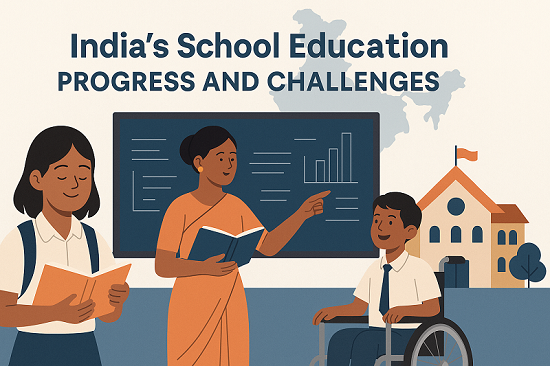
The Ministry of Education’s latest Unified District Information System for Education Plus (UDISE+) 2024–25 report offers an important snapshot of India’s school education. The numbers reveal progress across teachers, enrolments, infrastructure, and gender representation. But as with any large-scale dataset, the fuller story emerges when these achievements are held against persistent challenges on the ground.
Key Improvements Highlighted in the Report
Teachers and Student Ratios
For the first time, India has crossed the one crore mark in the number of teachers. From 94.8 lakh in 2022–23 to over 1.01 crore in 2024–25, the increase represents a 6.7% rise within two years. The Pupil-Teacher Ratio (PTR) too has improved sharply, now standing at 10 for the foundational stage, 13 at the preparatory level, 17 in middle school, and 21 in secondary. All of these are comfortably better than NEP 2020’s recommendation of 30:1, suggesting children now have more access to individual attention.
Dropouts and Retention
Dropout rates have fallen across the board. At the preparatory stage, they are down to 2.3%; in middle school to 3.5%; and in secondary to 8.2%. Retention, meanwhile, has climbed, with 92.4% of students staying on through the preparatory stage, 82.8% at middle, and 47.2% at secondary—supported by the increase in schools offering higher grades.
Transition and Enrolment
More children are continuing their education without breaks. Transition from foundational to preparatory is up to 98.6%, and from middle to secondary to 86.6%. Gross Enrolment Ratio (GER) has also risen, with secondary education seeing an uptick from 66.5% to 68.5%.
Infrastructure Growth
Infrastructure remains a bright spot. Over 93% of schools now have electricity, 99% provide safe drinking water, and 97% are equipped with girls’ toilets. Computer access has grown to 64.7%, internet access to 63.5%, and more than half of schools now have ramps and handrails, improving accessibility.
Gender Representation
Representation of women in teaching has crossed 54%, and girls’ enrolment has edged up to 48.3%, showing slow but steady progress towards gender parity.
Where the Numbers Need Context
While the report reflects genuine gains, the full picture requires a closer look at what these numbers mean in practice.
Teachers: Quantity vs Quality
Crossing the one-crore milestone is historic. Yet reports continue to highlight shortages in subject specialists and concerns about teacher training. A strong student-teacher ratio is valuable only if classrooms are led by well-prepared, motivated educators.
Dropouts: Regional Gaps Persist
The steady fall in dropout rates is promising, but averages mask uneven realities. States like Bihar still struggle with alarming dropout figures, particularly among girls and marginalised communities. National averages hide state-level realities.
Access Without Schools
It is encouraging to see single-teacher and zero-enrolment schools on the decline. However, the deeper problem isn’t just these schools but the absence of schools altogether in thousands of villages. Maharashtra alone has over 8,000 villages without schools. That’s not a statistic you’ll find in the UDISE+ summary, but it matters when we talk about access.
Digital Infrastructure: From Presence to Practice
Computer and internet access are on the rise, yet, other surveys suggest that many of these facilities remain underused, serving as placeholders for inspections rather than as tools for learning. Less than a quarter of India’s 1.47 million schools have smart classrooms. Digital literacy among students and teachers is patchy at best. So while infrastructure is expanding, its integration into actual pedagogy lags far behind.
Inclusion: Beyond Ramps
Ramps and handrails are a welcome start, but inclusion for children with disabilities requires much more. How many schools have accessible toilets, special educators, or learning aids for children with disabilities? And the bigger question: how many children with disabilities are actually enrolled and attending school regularly? Current data rarely tells us this.
Gender: Representation Without Leadership
Girls’ enrolment is up slightly to 48.3%. Female teachers now account for 54.2% of the workforce. Encouraging signs, yes. But leadership remains a male stronghold. Across higher education, only about 9.5% of institutions in India are led by women. At the school level too, women remain underrepresented in principal and leadership roles. Representation in classrooms is improving; representation in decision-making is not.
Reading the Report Holistically
The UDISE+ 2024–25 findings point to a system that is steadily improving access, retention, and infrastructure. But progress cannot be measured in isolation. Numbers must be matched with quality, access must be inclusive, and representation must extend to leadership. A fuller picture of Indian education comes not from rose-tinted fragments but from an honest balance of achievements and unfinished work.
Education
Education with Purpose: Shaping Responsible Learners for a Better Tomorrow

Education is the wellspring of civilization. It begets arts, culture, sciences, and polity to create a society oriented towards discovery and development. Through the ages, education has evolved to meet the needs of the times, and presently, it has reached an inflection point. The inexorable advancement of technology, abundance of information, pressing societal challenges and climate crisis have compelled educators to re-imagine education for the 21st century.
With the rapid prevalence of generative artificial intelligence, the question rightly being asked is: “What should we teach children when almost all answers can be readily had from AI?” The education of tomorrow would reward critical thinking over knowledge. That is what our focus and onus as educators should be. Children, being the digital natives, are more inclined to leverage the full potential of technology. It is up to us to help them realize and understand that AI should augment – not replace – HI (human intelligence). To think critically, to understand, to create and innovate should always be the preserve of humans. The ‘human-first, tech forward’ approach should become the cornerstone of education, going ahead.
An equal focus has to be on building skills, values and attitudes to address the most pressing problems of the world today. The World Economic Forum’s Education 4.0 framework underscores the importance of nurturing global citizenship, environmental stewardship, growth mindset, adaptability, civic responsibility, socio-emotional awareness, empathy, and kindness. The challenge is to find ways to model these into learners’ personality, traits and behaviours.
Re-designing curricula, taking learning beyond classrooms, and reforming assessments could be the answer. Marks and grades can only be one of the benchmarks of learning. Time has come for us to consider skill-based and value-based assessments to reflect a learner’s competence and character. Here, the National Education Policy 2020 – with its progressive vision – can be the guiding compass to steer us towards a more holistic and value-driven paradigm of learning. Institutions should also harness technology to create personalized learning pathways to meet the unique needs of each student.
None of this transformation would be possible without more empowered and enlightened teachers. Progressive institutions are already taking a lead in continuous professional development of their teachers and staff. On their part, teachers will have to be open to unlearn and relearn, upskill and reskill to stay abreast of the new pedagogies and technology. They should be adept in delivering personalized learning using data-driven insights and adapt to the new role of facilitators in an ecosystem where student agency is growing increasingly assertive. Schools must actively engage with parents and students to help them understand the need to look beyond grades. Parents must be informed of the changing jobs market and the importance of building durable skills.
Reforms and initiatives are also required at the policy level to attract private capital into an education landscape where private schools are outnumbered by government schools but cater to about half of the total 24.8 crore school-going student population. The potential of public-private partnerships should also be explored to elevate the quality of education in government schools. Digital infrastructure across the nation has to be strengthened to make learning accessible to the last child in the remotest of places. Creation and dissemination of multi-lingual content will enhance inclusivity of learning in the new Bharat.
Today, the education fraternity, governments, and parents need to collaborate to facilitate this transition into Education 4.0. We need to re-envision education as a human development endeavor to create a sustainable future wherein prosperity goes hand-in-hand with people and the planet. Right intentions need to be followed with earnest action. The future will be India’s to claim.
This article is authored by-
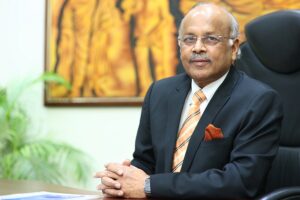
Shishir Jaipuria, Chairman, Seth Anandram Jaipuria Group of Educational Institutions
Education
Empathy as a 21st-Century Competency: Developing Emotional Intelligence among Students
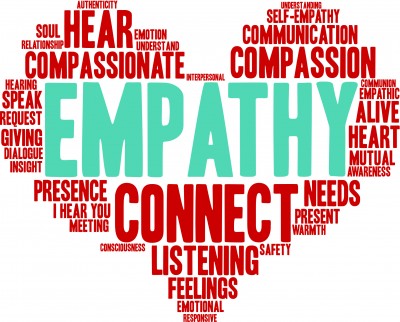
Within the conversation of future-ready education, empathy has moved from being characterized as a “soft” individual characteristic to being identified as an essential social and cognitive ability. Frameworks such as the OECD Learning Compass 2030, UNESCO’s Global Citizenship Education, and the World Economic Forum’s Future of Jobs Report put empathy at the forefront of skills required to succeed in an uncertain, interdependent world.
From Emotion to Competence
Empathy is confused with sympathy, yet they are essentially different. Empathy is an active, cognitive, and affective process, the capacity to grasp another’s emotional situation, comprehend it in context, and react creatively. Neuroscientific research, for example, by Decety and Jackson (2004), illustrates that empathy engages both the limbic system, which controls emotional resonance, and the prefrontal cortex, which controls perspective-taking and rational reaction. Briefly put, empathy does not just mean “feeling with someone”, it means thinking with feeling, where intellect and emotion unite to shape behaviour and decision-making.
Early Childhood (Ages 3–6) – Seeds of Empathy
At the age of three to six years, children in early childhood start showing the beginning signs of empathy by what is termed as “emotional contagion” by psychologists. They tend to cry when others cry or smile when others smile due to the observed emotional state. By the time they are four or five years old, according to research conducted by Zahn-Waxler et al. (1992), children start showing other-oriented concern like sharing, comforting, or embracing a fellow child who looks distressed. Empathy at this age is still primarily affect-based; children sympathize with others but possess little ability to grasp intricate frames of mind. Teachers can cultivate these early roots of empathy through narrative, role-playing, and guided social-emotional education that offer the vocabulary and structure to make sense of emotions.
Middle Childhood (Ages 7–12) – Perspective-Taking Develops
By middle childhood, around ages seven to twelve, empathy is increasingly cognitively complex. They start to understand that people might think and feel differently from themselves, an ability outlined in Selman’s stages of perspective-taking. Peer relationships are increasingly important at this stage, and children increasingly become sensitive to fairness, belonging, and group membership. According to research by Eisenberg et al. (2010), this is a critical window for the instruction of moral reasoning in addition to empathy. Cooperative learning activities, peer mediation programs, and community service offer children meaningful opportunities for empathy extension from intimate friendships to include strangers and even members of out-groups.
Adolescence (Ages 13–18) – Abstract and Global Empathy
An important stage in the development of empathy is adolescence, which lasts from the ages of thirteen to eighteen. Adolescents gain the ability to relate to abstract ideas such as global emergencies, injustice, and inequality. According to Blakemore’s (2018) neuroimaging research, adolescent brain regions involved in identity formation and social cognition are more active. However, hormonal changes and heightened self-awareness are also hallmarks of adolescence, which makes young people more reflective. Schools can assist in this area by offering intentional opportunities for teenagers to develop empathy, such as discussion forums that foster critical thinking, service-learning initiatives that are linked to current events, and cross-cultural interactions that extend their horizons. Adolescents can use these activities to channel their growing empathy into constructive civic engagement.
Young Adulthood (18+) – Empathy as Leadership Skill
Empathy matures during late adolescence and young adulthood as a skill that is intricately linked with emotional control, leadership, and ethical choice. Now, it transcends interpersonal interaction to become the hallmark of effective leadership. More employers are realizing this; a 2022 LinkedIn survey indicated that 78 percent of employers view emotional intelligence as equally or even more important than technical skills. Universities and workplaces increasingly require such competencies, and schools can prepare young adults through leadership programs, mentorship positions, and reflective practices that instil empathy in civic and professional life.
Beyond Awareness to Application
While awareness of empathy is valuable, its real utility comes from practice. Schools need to inculcate empathy not only in coursework but in lived experience. Narrative immersion in literature, film, and even virtual reality allows students to step into other people’s shoes. Structured ethical discussions in dialogic classrooms offer the space for respectful disagreement and deeper understanding. Cross-age mentorship, where older students mentor younger ones, develops a sense of responsibility while strengthening bonds across age. Service-learning, when paired with structured reflection, develops empathy into action. Even cutting-edge tools that offer emotional analytics while working in a team can assist students in self-evaluating and managing their emotions, turning empathy into a mindful and deliberate process instead of an automatic reaction.
The 21st-Century Payoff
The dividend of developing empathy in education is significant. In a world of artificial intelligence, empathy is one differentiator that makes us uniquely human. The World Economic Forum (2025) identifies emotional intelligence, empathy, and collaboration as among the future workforce’s top ten skills. Students who can read emotional team dynamics, negotiate across cultures, and build authentic relationships are not just more hireable but indeed invaluable in a fast-paced professional landscape.
Empathy is not a mushy virtue but a developmental skill that develops systematically throughout childhood and adolescence. Schools that deliberately foster it are not just creating smarter students; they are raising wiser, kinder citizens who can lead with compassion and resilience. Empathy is a moral and practical necessity for 21st-century education, the bridge that unites emotional intelligence and the needs of an interconnected world.
(This article is authored by Dr. Silpi Sahoo, Chairperson, SAI International Education Group)
Education
Math Meets Machine: How AI Is Revolutionising Classroom Learning
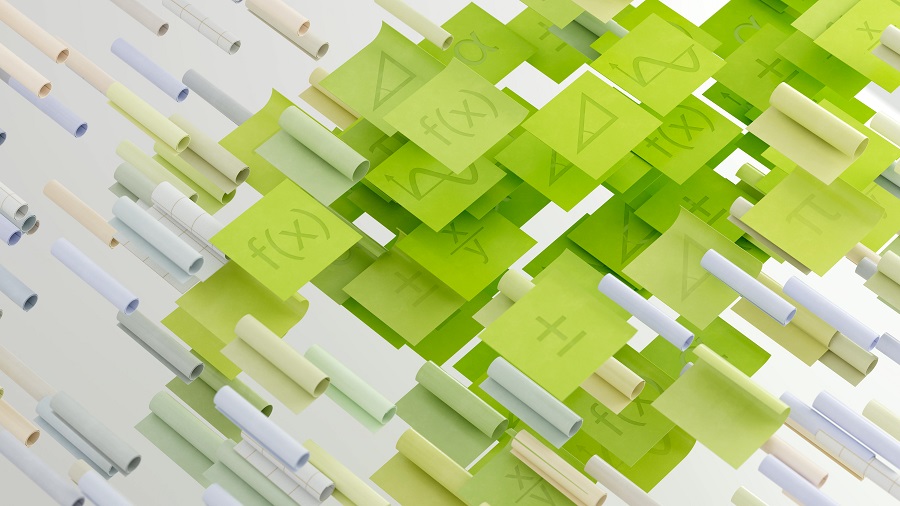
In a world where algorithms power everything from our social media feeds to self-driving cars, it’s no surprise that Artificial Intelligence (AI) is transforming one of the oldest pillars of education—math learning in the classroom. Once confined to textbooks and chalkboards, math instruction is now getting a high-tech upgrade, ushering in a new era of personalised, engaging, and data-driven learning.
Cracking the Code: Why Math Needs a Makeover?
Let’s face the fact that many students see math as abstract, intimidating, or just plain boring. Traditional classroom approaches often take a one-size-fits-all route, leaving behind both the struggling learner and the gifted problem-solver. This is where AI steps in, not to replace the teacher, but to empower them with tools that adapt to each student’s pace, gaps, and style.
Enter AI: The Digital Math Mentor
Imagine a classroom where a student struggling with fractions gets instant, visual explanations tailored to their exact misunderstanding. At the same time, another who excels in geometry is offered advanced challenges to stretch their thinking. AI platforms are doing just that. They use real-time data to analyse student responses, detect patterns of error, and provide feedback that feels like one-on-one tutoring.
Far from replacing educators, AI acts as a powerful teaching assistant. Teachers can use AI dashboards to spot who needs extra help, where the class is lagging, or what concepts need reteaching without spending hours on manual assessments. This frees up more time for creativity, collaboration, and real-life math applications that bring numbers to life.
AI also allows classrooms to become more inclusive and equitable. Language barriers? AI can offer multilingual support. Visual learners? Dynamic simulations and interactive tools adapt seamlessly. Students with special needs? Personalized pacing ensures no one falls through the cracks.
What’s Next? The Future of Math + AI
As AI grows more sophisticated, so does its potential in math classrooms. Think AI-generated practice problems based on local news, gamified learning paths that turn algebra into an adventure, or virtual tutors available 24/7 for homework help.
But with great power comes great responsibility. Educators, parents, and developers must ensure that AI tools remain ethical, transparent, and supportive, not controlling or biased.
Math education is no longer just about memorising formulas or solving problems on paper. In the AI-powered classroom, it’s about curiosity, connection, and confidence. With the right blend of technology and teaching, we’re not just raising better mathematicians but combining critical thinking with the subject for a world powered by data and driven by ideas.
This article is authored by-
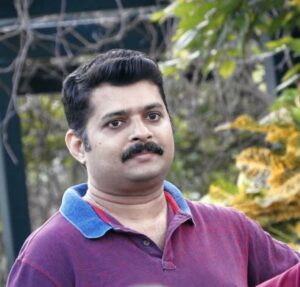
Ranjith P C, Head Curriculum Excellence, TVS Education
Education
Nirvaan Birla on Why Social Media Needs a Rethink in Today’s Classrooms

What happens when self-worth becomes a scrolling statistic? When confidence is measured in likes, validation is sought in comments, and a missed post feels like a missed opportunity, social media quietly becomes more than a platform; it becomes a mirror that distorts.
For the younger generation, the digital world isn’t an escape. It’s their reality. What once was a space for fun and connection now silently dictates their self-image, decisions, and even mental health. A carefully crafted caption, the right filter, or a viral reel can spark joy, but it can also fuel anxiety, insecurity, and constant comparison.
As engaging as social media is, it comes with an invisible cost. The pressure to be constantly available, consistently appealing, and endlessly relevant can take a toll. Many teenagers find themselves trapped in a loop of approval-seeking, often mistaking online popularity for personal worth.
Online peer pressure has evolved from being subtle to strategic. Likes are currency, stories are reputation, and every post is performance. Combine that with cyberbullying, misinformation, and the relentless pace of content, and you’ve got a digital space that’s as overwhelming as it is addictive.
Yet, knowing how to use social platforms doesn’t mean knowing how to handle them. Digital literacy has surged, but digital emotional intelligence still needs nurturing.
Recognising the urgency of this shift, Nirvaan Birla, Founder of Birla Open Minds, shared, “We see it every day. The impact social media is having on the younger generation’s mental and emotional wellbeing is significant. That is why at Birla Open Minds, we have initiated sessions like ‘Likes vs. Life’ across our schools. These sessions are designed to help learners reflect on their relationship with social media, how it affects their confidence, their focus, and their sense of self. Our larger vision is to shape not just academically strong individuals but also emotionally resilient ones who can navigate the digital world with awareness and responsibility.”
The idea isn’t to villainize social media. It’s to humanize its users. What the younger generation needs most isn’t just digital access, but digital awareness. The ability to pause. To question. To ask: Is this who I really am, or just who I’m trying to be online. Because beyond the reels, hashtags, and likes lies something far more important: life. And that should never be lived for an algorithm.
Education
Teaching Privilege: Why It Belongs in Every Classroom

Here’s the thing about privilege: most of us don’t even realise how it shapes our choices, our comfort zones and the opportunities we chase
I’ve been thinking about this for a while now, but it hit me harder during a recent conversation with a college student. One of the factors they had in mind while choosing their higher education institution was that most of the students there came from similar economic backgrounds. They felt uneasy at the thought of being in a space where others might be less privileged than them. And just like that, it became clear: even the discomfort of being around inequality is, in itself, a kind of privilege.
Here’s the thing: privilege wears many faces. Money, yes. But also caste. Gender. Language. Skin tone. Disability. Geography. And then there’s what Gen Z calls “pretty privilege”—the unspoken perks of fitting society’s standards of attractiveness. These aren’t abstract ideas. They play out every day—in who gets picked, who gets heard, who gets help without asking.
This isn’t about guilt. Guilt gets us nowhere. Awareness, though? That’s powerful. Students should be taught to recognise the invisible lifts they get. It’s not just that some kids have better shoes—it’s that they’ve never had to worry about having shoes. It’s not just about who studies in English-medium schools—it’s about who gets praised for speaking English at all.
Privilege doesn’t cancel out hard work. It explains the head start. And when students understand that, they become better humans. They stop seeing success as a solo act and start acknowledging the small privileges they enjoy. These can be supportive families, access to tutors, clean water, a safe route to school. Things so normal for some, they fade into the background. Afterall, acknowledgment is the first step to building empathy.
So where do schools come in? Right at the heart of it. Not with token assemblies or once-a-year poster competitions, but with consistent conversations. Through stories, books, theatre, debates—whatever gets them to look up from their own experience and into someone else’s. Not to feel bad, but to build perspective. And maybe, just maybe, to use their privilege to lift someone else.
This isn’t about shaming anyone or turning life into a comparison game. It’s about empathy and responsibility. When students know they benefit from privilege, they can harness it to help others. They can mentor younger kids, fundraise for resources, or simply speak up when they see inequality in the classroom.
This isn’t a curriculum change. It’s a mindset shift. It’s the difference between raising achievers and raising citizens. If we teach kids to see both their own comfort and the struggles of others, we’ll nurture a generation that doesn’t just accept their advantages but shares them too.
If we want an education system that prepares students for the real world, then recognising privilege isn’t a side-topic. It’s foundational.
(This article is authored by Dhruv Chhabra, Lead-Content and Design at ScooNews and reflects the author’s personal beliefs and lived observations as an education journalist and storyteller. It is written with the hope that classrooms can become kinder, more aware spaces.)
Education
India Plans Unified Higher Education Regulator: What the HECI Bill Means

India is on the verge of a major overhaul in how it governs higher education, with the government aiming to replace the University Grants Commission (UGC), All India Council for Technical Education (AICTE), and National Council for Teacher Education (NCTE) with the proposed Higher Education Commission of India (HECI). The move, aligned with the National Education Policy 2020, seeks to create a more efficient, autonomous, and accountable regulatory system.
Why Replace UGC, AICTE & NCTE?
The current structure—with multiple agencies overseeing different sectors—has long faced criticism for being fragmented and bureaucratic. Overlaps in jurisdiction, slow decision-making, and limited autonomy for institutions have prompted calls for reform. Committees like the Yash Pal and National Knowledge Commission have recommended a unified regulator to reduce red tape and improve coordination.
What HECI Will Look Like
According to the draft and Lok Sabha updates by Education Minister of State Sukanta Majumdar, HECI will have four independent verticals:
-
Regulation (NHERC) – compliance and governance
-
Accreditation (NAC) – quality assurance
-
Grants (HEGC) – performance-based funding
-
Academic Standards (GEC) – curriculum and learning outcomes
This “light but tight” approach aims to foster innovation and autonomy while maintaining integrity and transparency.
Potential Benefits
-
Streamlined oversight: Instead of navigating multiple authorities, institutions will liaise with one regulator.
-
Better resource allocation: Integrated funding vertical offers performance incentives, echoing models in the UK and Australia.
-
Unified standards: Accreditation and curriculum will be uniform, reducing interstate disparities.
-
Global alignment: Can enhance India’s appeal with international quality frameworks.
Risks & Concerns
-
Centralisation: Experts warn that vesting extensive power in one body may over-centralise control, risking academic freedom.
-
Loss of specialised oversight: Domain experts from UGC, AICTE, and NCTE may be diluted.
-
Bureaucratic inertia: Transition could bring its own delays and resistance from existing bodies.
-
Compliance complexity: Institutions may face confusion adapting to new norms and vertical structures.
Global Inspiration & Way Forward
Many countries offer models worth emulating: the UK’s Office for Students (OfS), Australia’s TEQSA, and the US’s accreditation agencies show that one-regulator systems can work—if they strike a balance between oversight and autonomy. The NEP framework supports this, but success hinges on a smooth transition, capacity building, and safeguarding academic freedom.
In short, HECI is more than an institutional reshuffle. It has the potential to redefine Indian higher education—if implemented thoughtfully. The challenge now lies in building consensus, streamlining regulatory roles, and ensuring this new body empowers institutions, not constrains them.
This news has been sourced from various media outlets, with parts of it written and contextualised by the ScooNews editorial team.
Education
Over 4.7 Lakh Pirated NCERT Books Seized Since 2024, Govt Reports
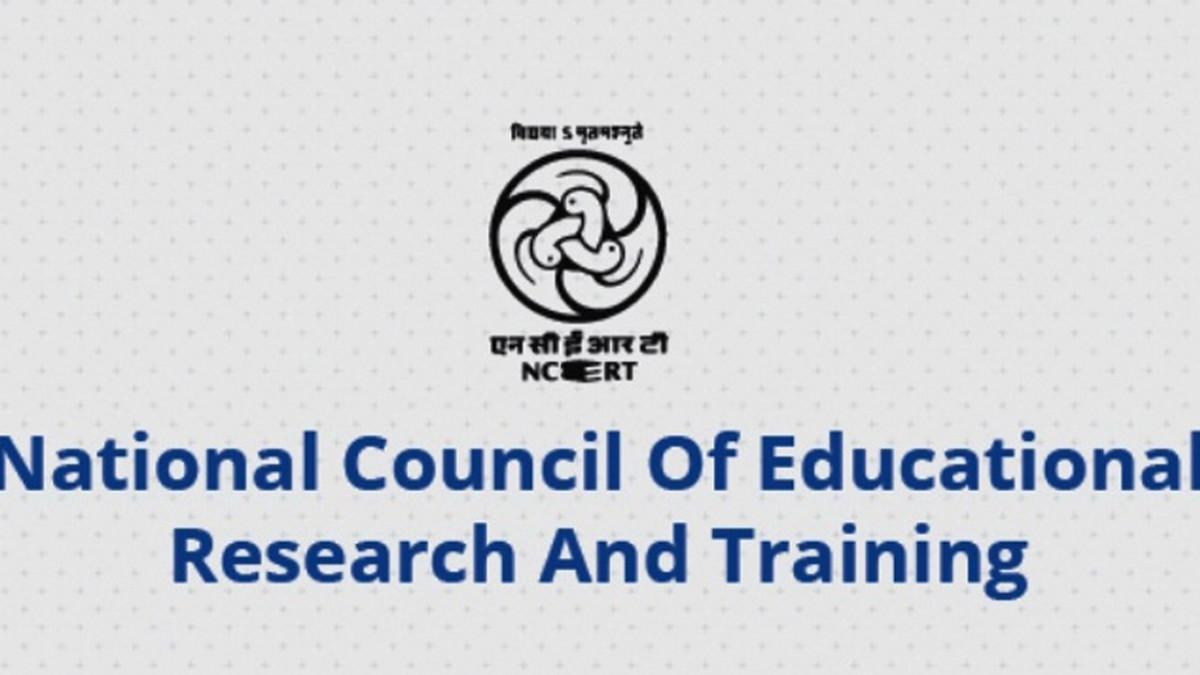
More than 4.7 lakh counterfeit NCERT textbooks have been confiscated across India since 2024, the Ministry of Education revealed in the Rajya Sabha this week. The large-scale crackdown is part of NCERT’s renewed efforts to combat textbook piracy and safeguard access to authentic, affordable learning materials for students nationwide.
Responding to a written query in the Upper House, Minister of State for Education Jayant Chaudhary stated that textbook piracy has been rampant across multiple states, driven primarily by commercial interests of unauthorised entities. Between 2024 and 2025, over 4.71 lakh fake NCERT books were seized during enforcement operations.
In a series of raids across 29 locations suspected of producing or distributing counterfeit books, NCERT officials also uncovered stocks of fake watermarked paper and high-end printing equipment — collectively worth over ₹20 crore. These raids aimed not only to halt the illegal printing supply chain but also to reinforce the credibility of NCERT materials.
“NCERT textbooks are printed on a no-profit, no-loss basis to reach every child in the country,” Chaudhary reiterated in his reply.
To further stem the piracy tide, NCERT has taken several preventive steps, including reducing textbook prices by 20%, modernising printing methods, and making books more widely available through e-commerce platforms. These steps are aimed at reducing dependency on black-market sources by ensuring affordable and timely textbook access.
In collaboration with IIT Kanpur, NCERT also piloted a tech-based anti-piracy solution using a patented mechanism in one million copies of a Class 6 book. This innovation allows books to be tracked and authenticated, potentially creating a digital trail to curb piracy in the future.
Education
Student Suicides Account for 7.6% of All Cases in India: What the Govt Is Doing Next

Education
CBSE Makes CCTV Cameras with Real-Time Audio-Visual Recording Mandatory in Schools

In a notification issued on Monday, to enhance student safety and ensure accountability on school campuses, the Central Board of Secondary Education (CBSE) has mandated the installation of high-resolution CCTV cameras with real-time audio-visual recording across all affiliated schools.
According to the notification, the board has amended its Affiliation Bye Laws-2018, requiring the installation of CCTV cameras at all critical points within school premises, including classrooms, corridors, libraries, staircases, and other key areas—excluding washrooms and toilets. The footage must have a minimum backup of 15 days and should be made available to authorities upon request.
This directive is part of CBSE’s broader commitment to ensuring students’ physical and emotional well-being. It aims to create safer learning environments by preventing bullying, intimidation, and other implicit threats. The move also aligns with the National Commission for Protection of Child Rights (NCPCR)’s ‘Manual on Safety and Security of Children in Schools’, released in 2021, which outlines safety protocols for creating secure and supportive school settings.
In the official circular, CBSE Secretary Himanshu Gupta stated, “Children have a constitutional right to live with dignity and access education in a safe and supportive environment. The safety has two aspects — from unscrupulous, un-societal elements and from implicit threats like bullying. All such threats can be addressed using modern surveillance technologies.”
The board noted that bullying significantly impacts student self-esteem and mental health. “Children require a healthy and nurturing environment to thrive. This decision is part of our effort to foster that environment,” the notification read.
While many private schools have welcomed the move, citing improved monitoring and security, several government school representatives expressed concern over the implementation. They highlighted the need to repair existing non-functional cameras before investing in new technology.
As implementation begins, the directive reinforces CBSE’s stance on prioritising student safety through proactive and tech-enabled solutions.
-

 Education3 months ago
Education3 months agoOpenAI Academy Launches in India to Democratise AI Education for Students, Teachers, and Startups
-

 Education2 months ago
Education2 months agoNCERT Launches New Class 5 & 8 Textbooks, Makes Art Education Mandatory
-
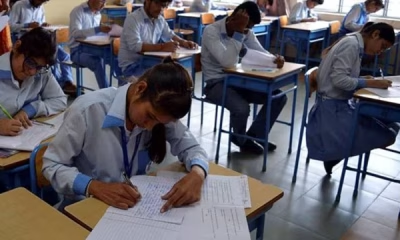
 Education2 months ago
Education2 months agoCBSE To Conduct Board Exams Twice for Class 10 from 2026
-

 Education2 months ago
Education2 months agoNo More Backbenchers: How a Simple Seating Shift Is Reimagining Learning
-

 Education2 months ago
Education2 months agoGovernment Doubles Down on Coaching Centres: New Panel Signals Stronger Regulation Ahead
-
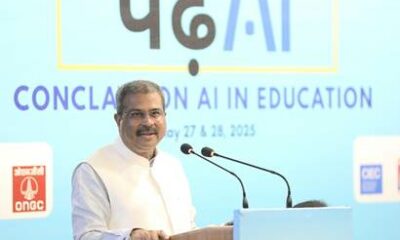
 Education3 months ago
Education3 months agoPadhAI Conclave Highlights Urgent Role of Artificial Intelligence in Indian Education
-
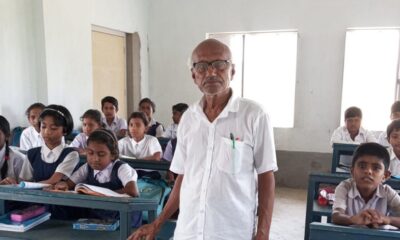
 Education2 months ago
Education2 months agoThe Man Who Called His Students Gods: Dwijendranath Ghosh
-
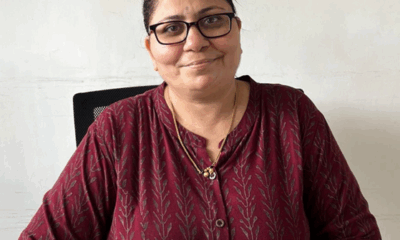
 Education1 month ago
Education1 month agoIn Every Smile, a Victory – Sandhya Ukkalkar’s Journey with Jai Vakeel’s Autism Centre
-
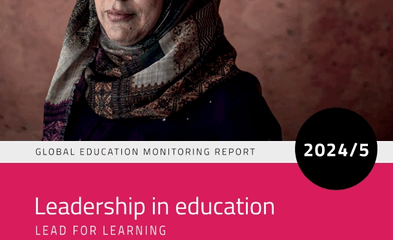
 Education3 months ago
Education3 months agoUNESCO Flags Foundational Learning Crisis & Leadership Gaps in India’s Education System
-
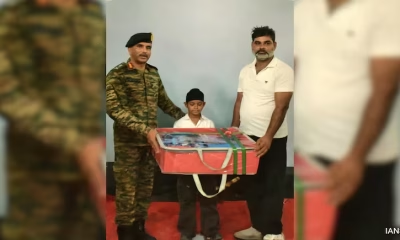
 Education1 month ago
Education1 month agoIndian Army to Sponsor Education of 10-Year-Old Who Aided Troops During Operation Sindoor




